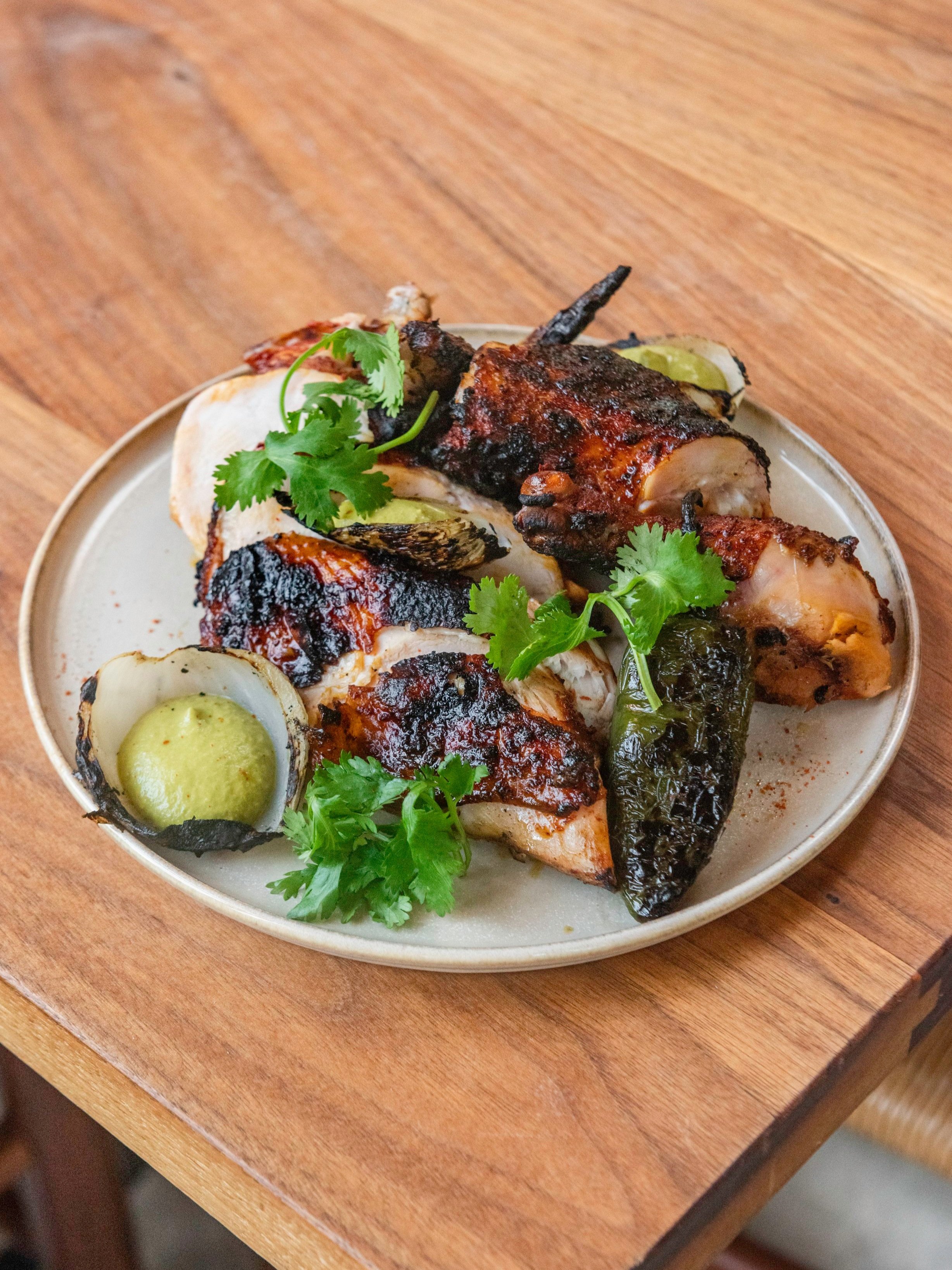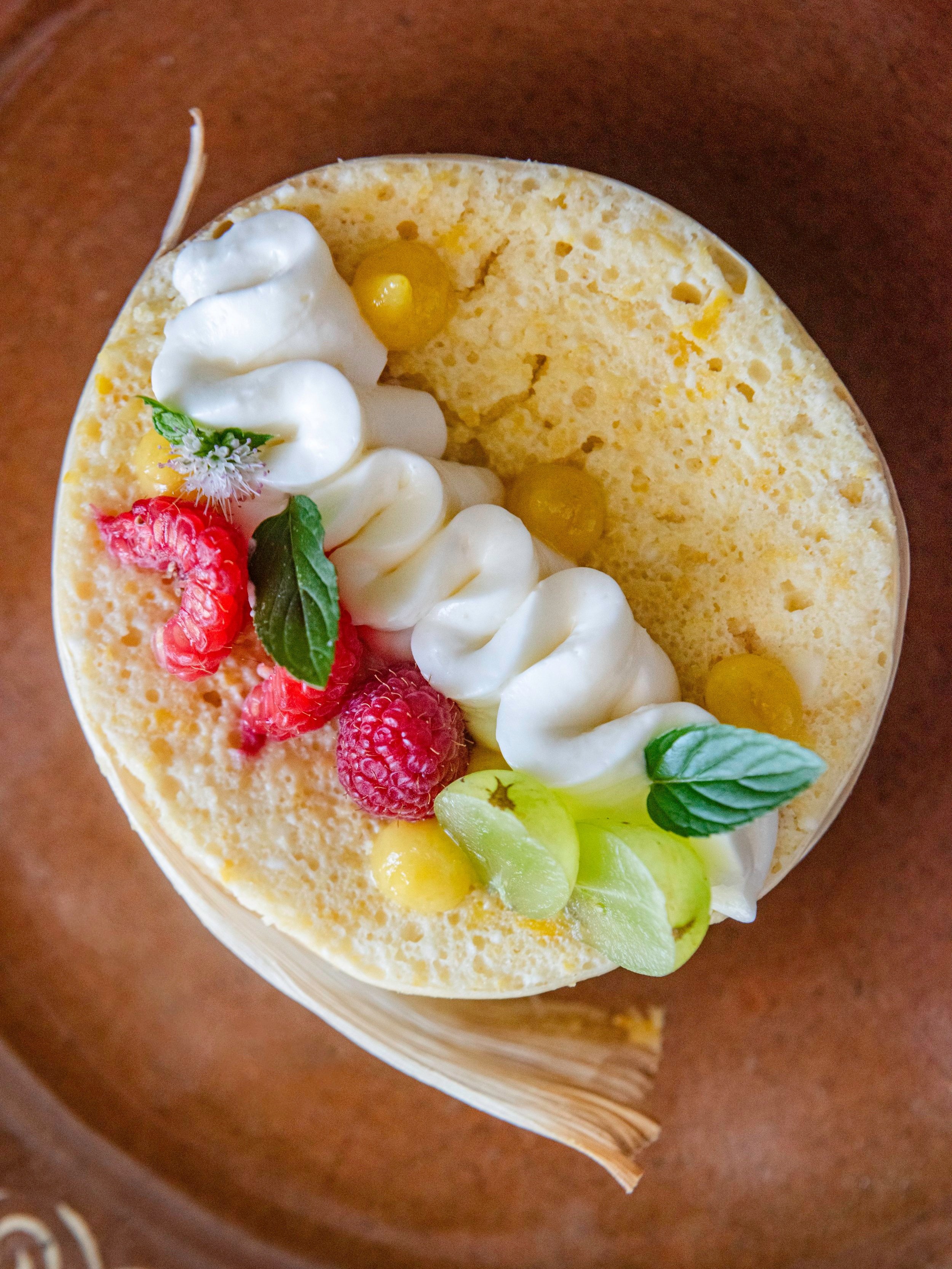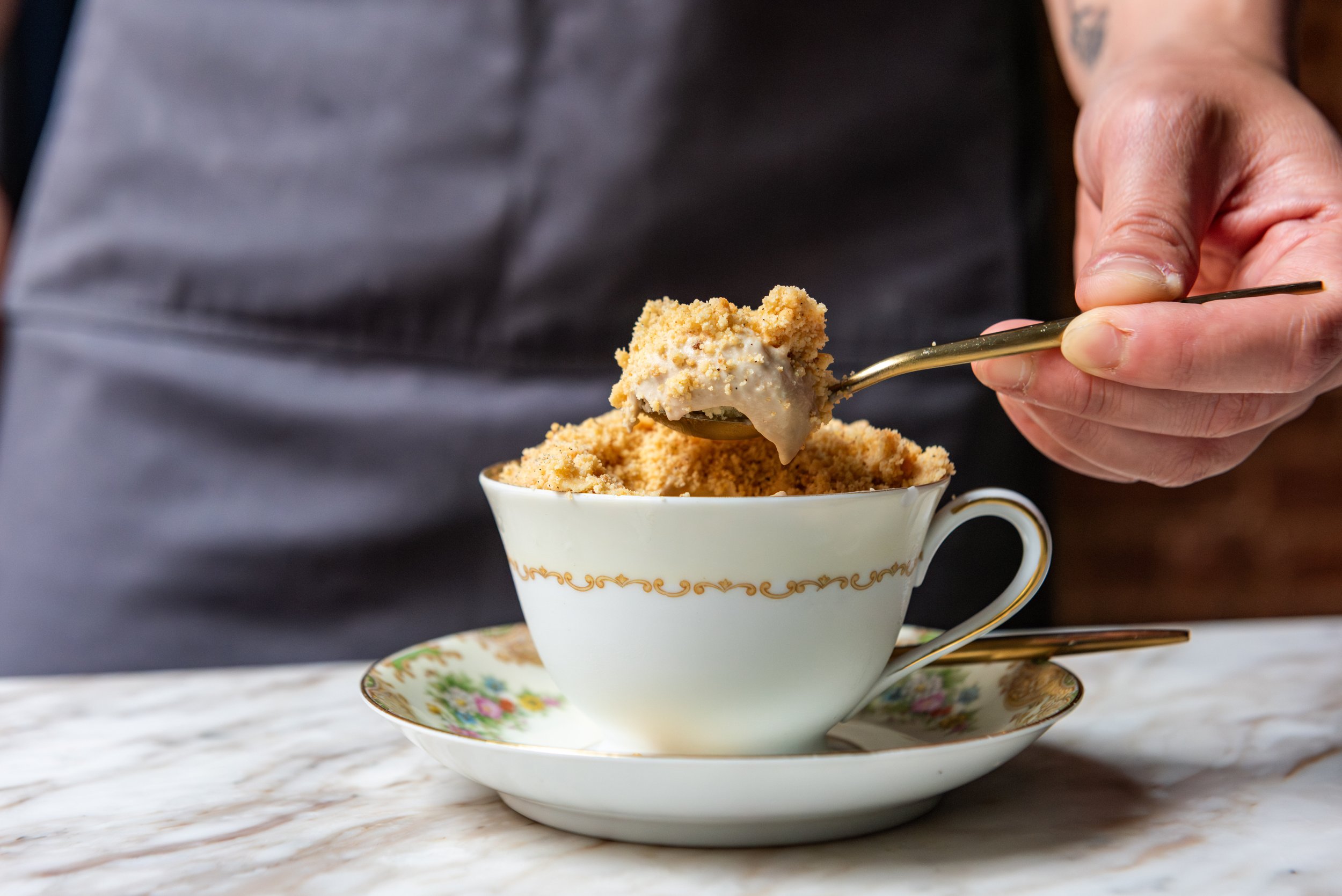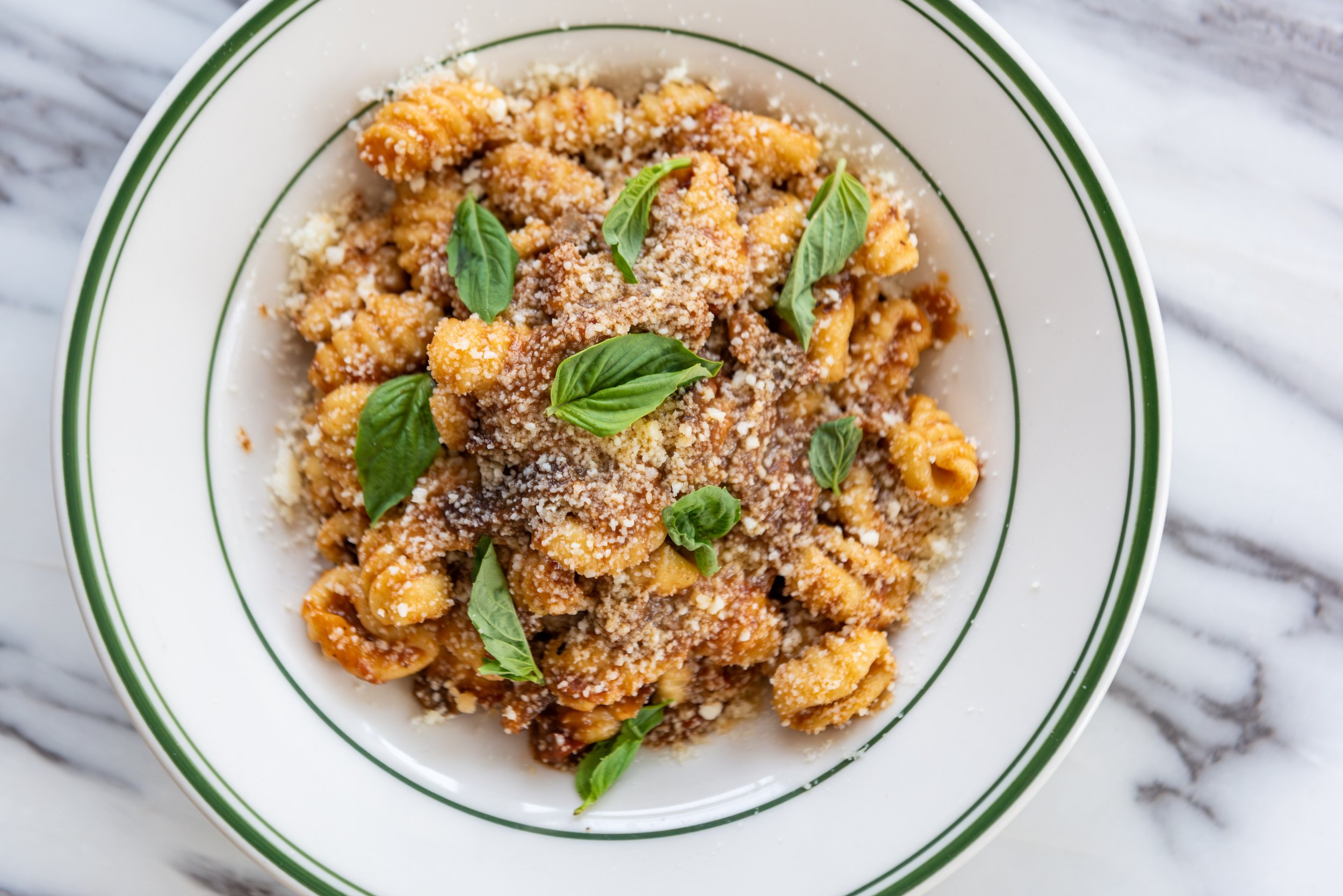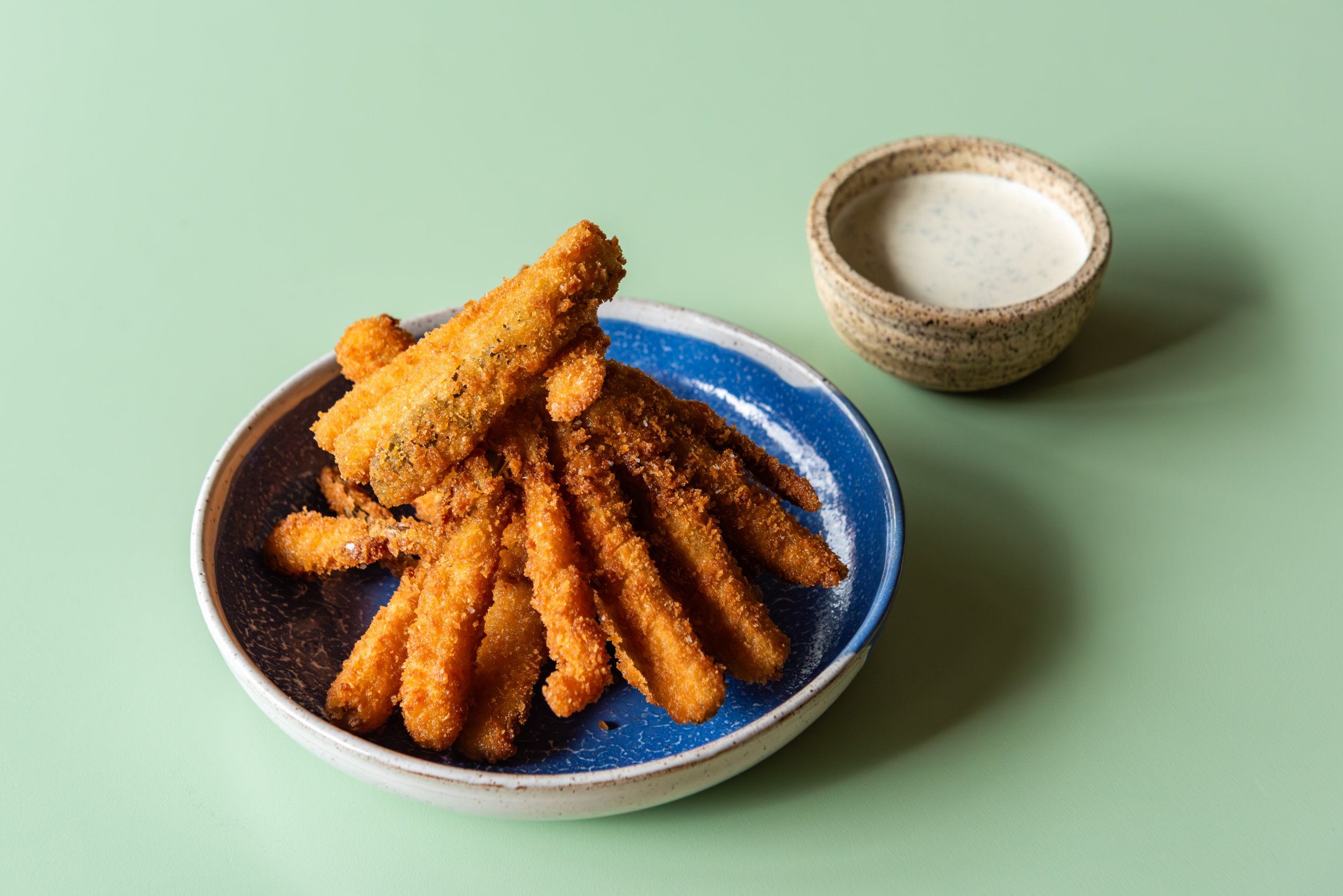2023 Austin-San Antonio Kitchen Notebook
An in-depth look at some of our favorite dishes and cocktails from our time on the ground in Austin and San Antonio.
Smoked Butternut Squash
Chef Kevin Cannon was visiting a friend in San Francisco when he stopped for a meal at acclaimed wood fire-driven Saison. The restaurant had a hearth-smoked and dehydrated beet on the menu, and he was hooked by the flavors and textures. Back at Barley Swine, where live fire also drives the menu, Cannon looked for a way to emulate the smoked beet with his own kitchen setup. He opted for butternut squash, but lacking Saison’s hearth drying capabilities at the time, Cannon was forced to adapt. He first cures the squash tops in a salt-brown sugar solution. The squash is then smoked over Texas post oak before spending time in the dehydrator. “It’s more chewy,” says Cannon, “the flavor gets concentrated and changes the texture.” On pick up, the squash is seared with a generous amount of butter and roasted with a melty soft blue goat’s cheese. To make use of the rest of the squash, Cannon ferments the squash bottoms with dried chiles, then emulsifies them with vinegar, honey, and brown butter for a subtly spicy, punchy “hot sauce.” For some added texture, he tops the dish with toasted pepitas and crumbled house-made tostadas. ”That wonderment [from the customers] of like, ‘how did you make this?’ is one of the best parts.”
Grapefruit Aloe
When Pastry Chef Ariana Quant develops new desserts for the Hai Hospitality group, she has a plan to ensure her dishes hit every texture: “[a dessert] needs to be crunchy and creamy, and have a frozen element.” But for her grapefruit-aloe dish at Uchiko, Quant broke away from her own rules and created an “anti-texture” dessert. When H Mart opened in Austin, Quant and her cousin went through and grabbed a bottle of aloe vera soda. “The drink was really sweet with an underlying muscat grape taste,” she says. “It was pretty delicious, and I wanted to make it into a dessert.” To tie in the complex flavors of the aloe, Quant highlights juicy Texas ruby red grapefruit segments with a grapefruit curd that she sets with agar for a custardy, almost jelly-like texture. She also creates a simple grapefruit sorbet, and tops it with the inspiration for the dish, an aloe vera foam, the final cloud-like addition to the ethereal dessert. “This is the dessert for the people who have a negroni at the end of the night and want something a little more bitter,” says Quant. “I was going against my tried-and-true formula. It really tested me as a chef.”
Tonkotsu Menudo
While he was operating his pop-up Ramen Garage out of his family’s home, Chef Chris Krinsky kept seeing birria ramen all over his social media feeds. Krinsky grew up in Mexico, so he wanted to check it out. But what he found disappointed him: “They were just pouring consommé over instant Tapatío noodles,” he says. “It was delicious, but not at all what I was thinking.” So, he decided to break down and construct his version of menudo, translated into a bowl of ramen. Krinsky builds on a base of pork feet tonkotsu broth. “With menudo, you make this guajillo salsa that turns the stock red, and gives it this smoky, chile flavor,” he says. “And with a bowl of ramen, you have a tare seasoning liquid, so we make a guajillo tare.” Krinsky finishes the bowl with a garlic and cumin-fueled chile oil, spiced hominy, fried chiles de árbol, and of course, Hakata-style tonkotsu noodles. Krinsky believes that the tonkotsu menudo “is structurally sound as a bowl of ramen, and tastes like an absolutely delicious menudo. Once I had the opportunity to start my brick-and-mortar, Ramen del Barrio, the concept definitely sprung from the ideas in this bowl.”
Achiote Chicken
As a kid, there was nothing Chef Jaime Gonzalez loved more than traveling to Mexico with his grandparents, walking through openair markets, and having his nose filled with the aroma of rendering rotisserie chicken fat dripping onto an open flame. So when he was tapped to open Carriqui in San Antonio’s Pearl District, he “wanted to create a dish that reflected that memory.” Leaning on the restaurant’s custom barbacoa-style underground pits, Gonzalez got to work. “We brine the chickens, then marinate them in achiote paste,” he says. “This chicken is a different way of using that cooking method and the flavors of cochinita pibil.” Gonzalez loads the marinated chickens into underground pits and smokes them over pecan and post oak, infusing Texas wood flavor into the dish. They’re pulled out of the pits, cooled, then fired to order on a wood grill to crisp up the skin. Served with house-made heirloom corn tortillas, grilled onion and jalapeño, and a bright salsa verde, Gonzalez’s deeply flavorful achiote chicken pushes the tradition of what Texas barbecue can be. “I love being able to do a great smoked chicken, but with the traditional technique of burying and smoking food,” says Gonzalez.
pan de elote
Christian Mendez grew up on her grandmother’s uchepos: sweet breakfast tamales made with a special white corn that grows in Michoacán, Mexico. When she left her hometown of Uruapan for San Antonio and opened Alebrije Bakery, she missed that sweet, milky corn confection. The only problem: she couldn’t find the same white corn. “I tried everything,” she says. “We found a guy on Facebook who said he sold it. We drove really far, and when we got there, it was dry. The texture just didn’t work.” But it didn’t deter her, and she set her sights on translating the flavors of uchepo into another dessert with a fluffy, creamy texture: Japanese cheesecake. For her version, Mendez boils yellow sweetcorn with its husk to mimic the white corn-flavor, then blends in butter, cream cheese, egg yolks, cornstarch, and condensed milk, and folds in whipped egg whites. Once it’s baked in a water bath and cooled, she tops the almost pudding-like cake with fresh fruit, whipped cream cheese, mango jelly, and herbs for a pop of acidity and brightness. “I love that it reminds me of my home,” says Mendez. “And I really love that it tastes like corn—not like butter, not condensed milk, not cream cheese—it just tastes like corn.”
Mesquite Tortilla
Having a taco at Austin’s Con Todo is the closest you’ll get to eating a taco from the Rio Grande Valley (RGV) without driving the 300+ miles south. Chef Joseph Gomez started the food truck to bring dishes from his home in the RGV to Central Texas. “I source as much as I can from the RGV to showcase the beautiful produce from the area and to start conversations about migrant workers.” One ingredient in particular has special ties to Gomez’s upbringing: mesquite. The desert tree is prolific in Texas, and its pods can be ground into flour. For Gomez, it’s all about mesquite pod flour tortillas. “It has a nuttiness. It’s almost sweet,” he says. He runs the mesquite tortillas on the weekends when he can get his hands on the pods, whether by foraging them himself or sourcing them from McCartyLand Farms in Seguin. Roasted, then ground, the flour has an aggressively “pungent” flavor, so Gomez blends it with Texas wheat flour and ups the hydration to get the right texture before rolling them into thin, 10-inch rounds— ”classic to RGV.” He fills them with barbacoa, onions, and cilantro; or eggs, potato, bacon, and refried beans in his version of the Q Taco, popularized by the Laredo Taco Company at gas stations in South Texas, with the lightly scented tortilla adding a layer of warm, musky flavor.




